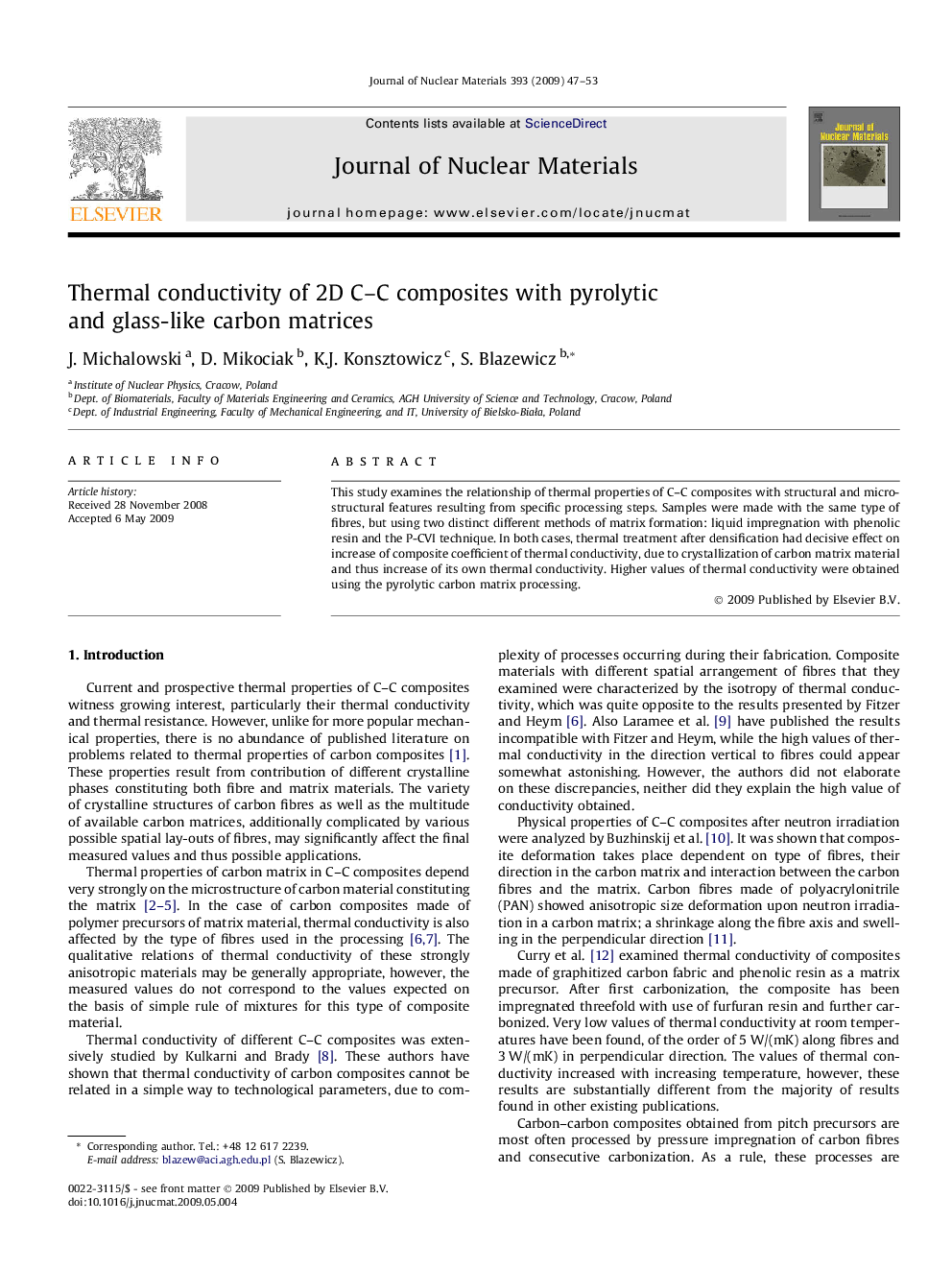| Article ID | Journal | Published Year | Pages | File Type |
|---|---|---|---|---|
| 1567806 | Journal of Nuclear Materials | 2009 | 7 Pages |
Abstract
This study examines the relationship of thermal properties of C–C composites with structural and microstructural features resulting from specific processing steps. Samples were made with the same type of fibres, but using two distinct different methods of matrix formation: liquid impregnation with phenolic resin and the P-CVI technique. In both cases, thermal treatment after densification had decisive effect on increase of composite coefficient of thermal conductivity, due to crystallization of carbon matrix material and thus increase of its own thermal conductivity. Higher values of thermal conductivity were obtained using the pyrolytic carbon matrix processing.
Related Topics
Physical Sciences and Engineering
Energy
Nuclear Energy and Engineering
Authors
J. Michalowski, D. Mikociak, K.J. Konsztowicz, S. Blazewicz,
